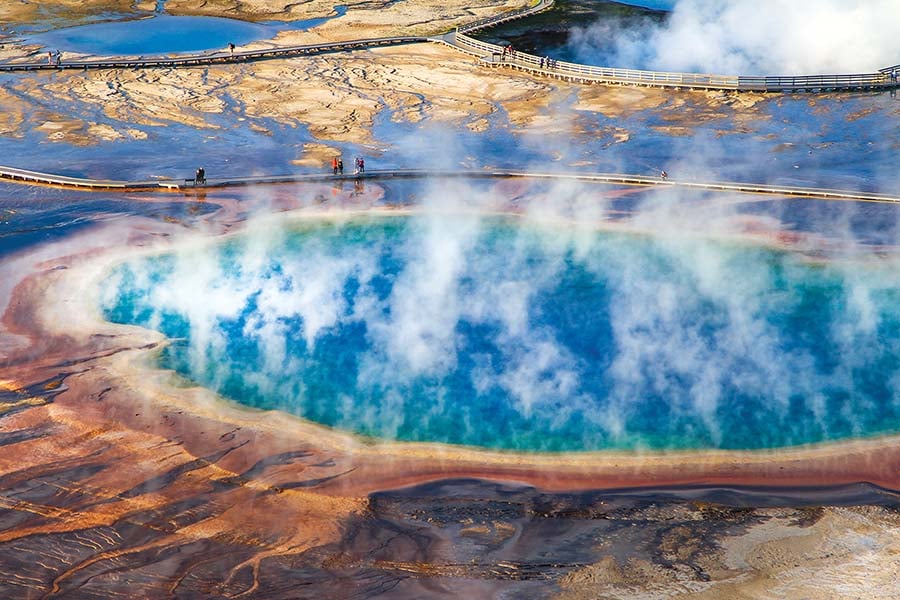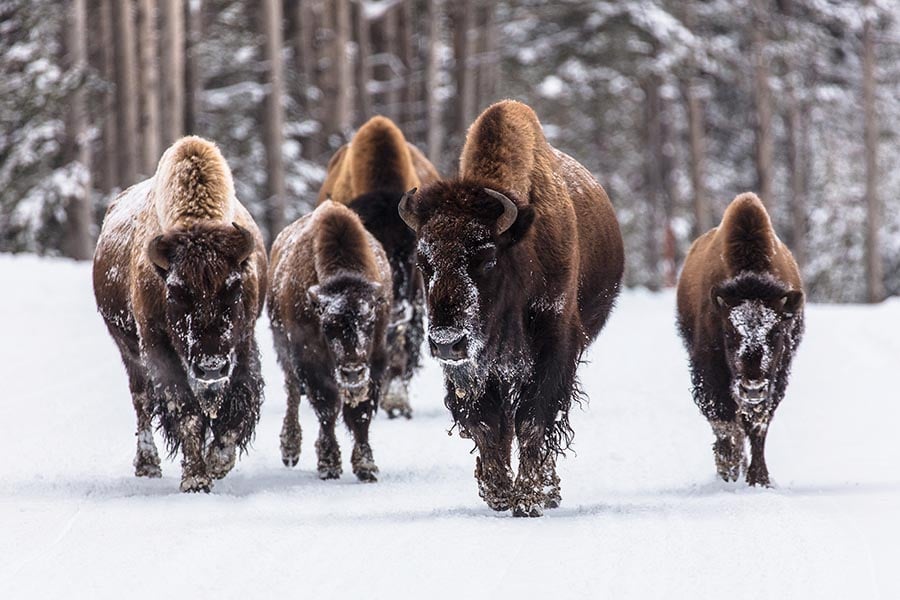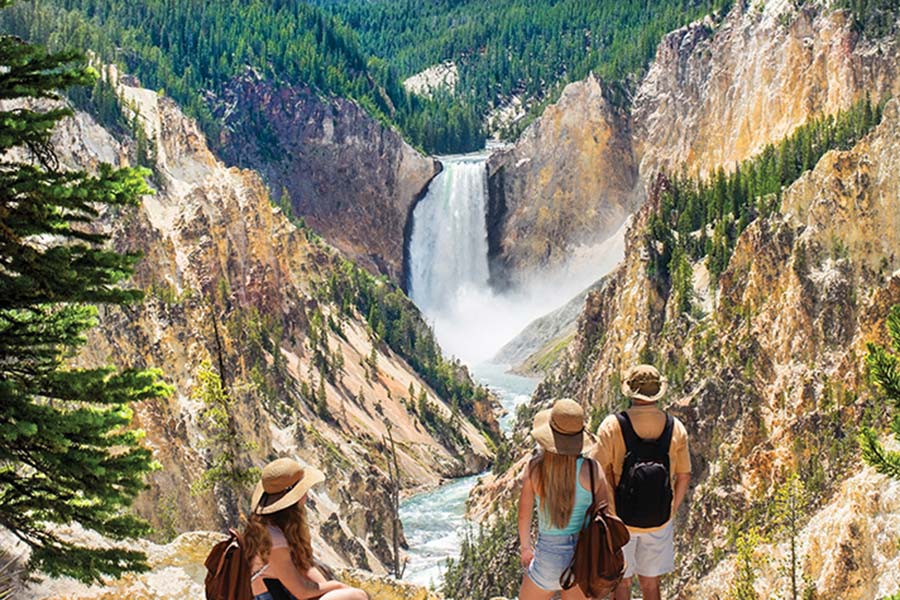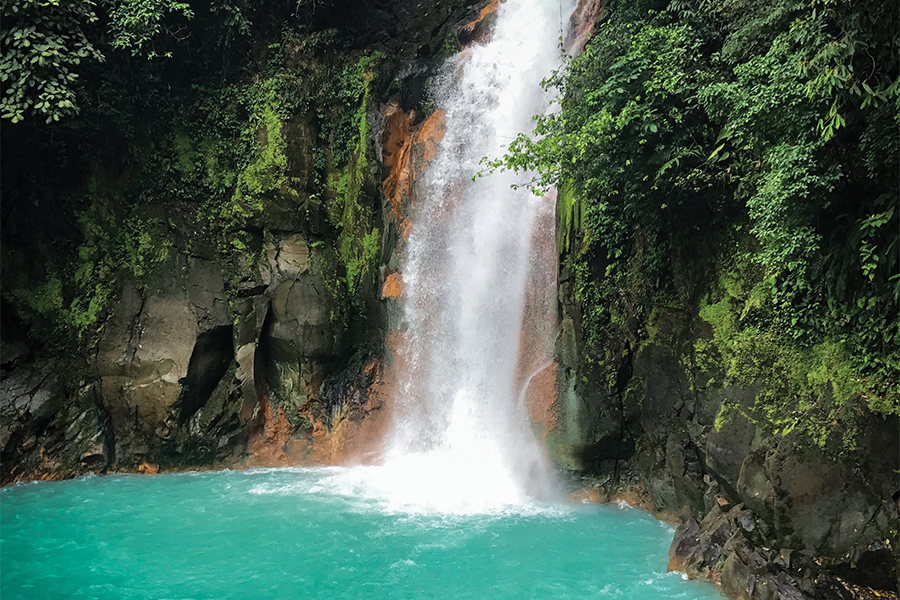Making the Most of Yellowstone National Park

Whether you’re planning a three-day weekend or a full week vacation, Yellowstone is a great destination to unplug, appreciate nature’s beauty and experience some of the coolest natural wonders in the country.
Yellowstone National Park—the first national park to be signed into law and the fifth most popular today—is located in the northwest corner of Wyoming, with parts crossing over Montana and Idaho state lines. The gorgeous 2.2-million-acre park encompasses lakes (including Yellowstone Lake, the largest freshwater lake above 7,000 feet in North America), hydrothermal features, a canyon, rivers, mountains and a menagerie of wildlife, so it’s easy to see why it tops many travelers’ bucket lists. No matter what you decide to prioritize on your trip, one thing’s for sure—one visit won’t be enough. Below are five things to do during your Yellowstone National Park visit.
Experience Hydrothermal Wonders: Volcanoes and Geysers
At Yellowstone, you’re on top of the Yellowstone caldera, a massive supervolcano that erupted about 640,000 years ago. Scientists can’t agree if (or when) the still-active volcano will erupt again. Regardless, there won’t be a shortage of eruptions during your visit: Yellowstone is the largest geyser locale in the world with thousands of hot springs and approximately 300 to 500 geysers.
Renowned Old Faithful is the most popular geyser in Yellowstone and named for its predictable eruptions. Just north of Old Faithful is Grand Prismatic Spring, the most photographed hydrothermal feature in Yellowstone due to the beautifully bright colors it produces. Outside of the park’s southwest region, options include the Norris Geyser Basin (home to Steamboat Geyser, the world’s tallest active geyser) or Fountain Paint Pot, where you can see hot springs, geysers, mudpots and fumaroles, all in one area.

Take a Hike
Did you know that Yellowstone has more than 900 miles of hiking trails? To say there are a few options is an understatement. To see more of Yellowstone’s incredible hydrothermal features, try one of the Mammoth Hot Springs trails in the northwest section of the park. The area is home to approximately 50 hot springs, including popular Liberty Cap, which rises 37 feet in the air. The Mt. Washburn Trail in the northeast will give you a totally different view of Yellowstone—at 6.4 miles round trip, this hike to a 10,234-foot peak showcases a view of Hayden Valley, geyser basins and even part of the Yellowstone caldera.
In the southeast section of the park is Storm Point Trail, an easy, 2.1-mile loop that gives visitors a chance to hike along Yellowstone Lake’s shorelines. For breathtaking waterfall views, you’ll want to spend time in what’s affectionately called Cascade Corner. Terraced Falls Trail is only a 3.6-mile round-trip hike, but for a more intense, 15.6-mile hiking excursion, make time for Union Falls, the second highest waterfall in Yellowstone Park at 260 feet.
Ski or Snowshoe in Yellowstone
Exploring a snow-covered Yellowstone by ski or snowshoe is not an experience for the faint of heart, although the lack of crowds makes for a peaceful visit. For a short ski trip, try the Old Canyon Bridge Ski Trail, a flat 1-mile trail perfect for seeing a wintery Yellowstone River. The Mammoth Hot Springs area has a selection of cross-country and downhill ski trails to choose from, too, plus a ski shop where you can double check trail conditions. If you’re not feeling up to tackling a trail by yourself, try booking a guided tour—a list of authorized businesses can be found on the Yellowstone website.

Observe the Wildlife
Fun fact: Yellowstone National Park is widely considered to have the finest megafauna wildlife in the lower 48 states. Bison, coyotes, timber wolves, Canadian lynx, grizzly and black bears, elk and moose are just some of the animals you may see roaming around, and if you look to the sky or the lake, there are also 300 species of birds and 16 species of fish.
Your own chances of seeing wildlife depend on what area of the park you are visiting, but for higher concentrations of animals, take a scenic drive through Lamar Valley in the northwest corner of the park where you’re sure to see bison, elk and even a few grizzly bears. Another popular option is Hayden Valley, where you’ll see the same wild animals and less visitors. Remember: Stay 100 yards from wolves and bears and at least 25 yards away from all other animals at all times. If they approach you, back away to maintain the distance. If you cause an animal to move or flinch, you’re too close.
Appreciate a Scenic Outlook
There are countless breathtaking views in Yellowstone, but there are a few spots you won’t want to miss, such as the Grand Canyon of Yellowstone, which includes a stunning view of the Lower Falls from Artist Point, a short walk from South Rim Drive in the Canyon Village area. In the northeast section of the park, you can view Tower Fall by driving 2.2 miles south of the Tower-Roosevelt Junction—the waterfall plunges 132 feet and is lined with uniquely shaped lava rock columns. For uphill views of park favorites Old Faithful and the Grand Prismatic Spring, be sure to visit Observational Point Trail and Fairy Falls Trailhead respectively. These natural wonders are incredible to experience up close, but as with most things in life, perspective just makes them that much more beautiful.

For more information about Yellowstone, visit nps.gov or yellowstonepark.com.





